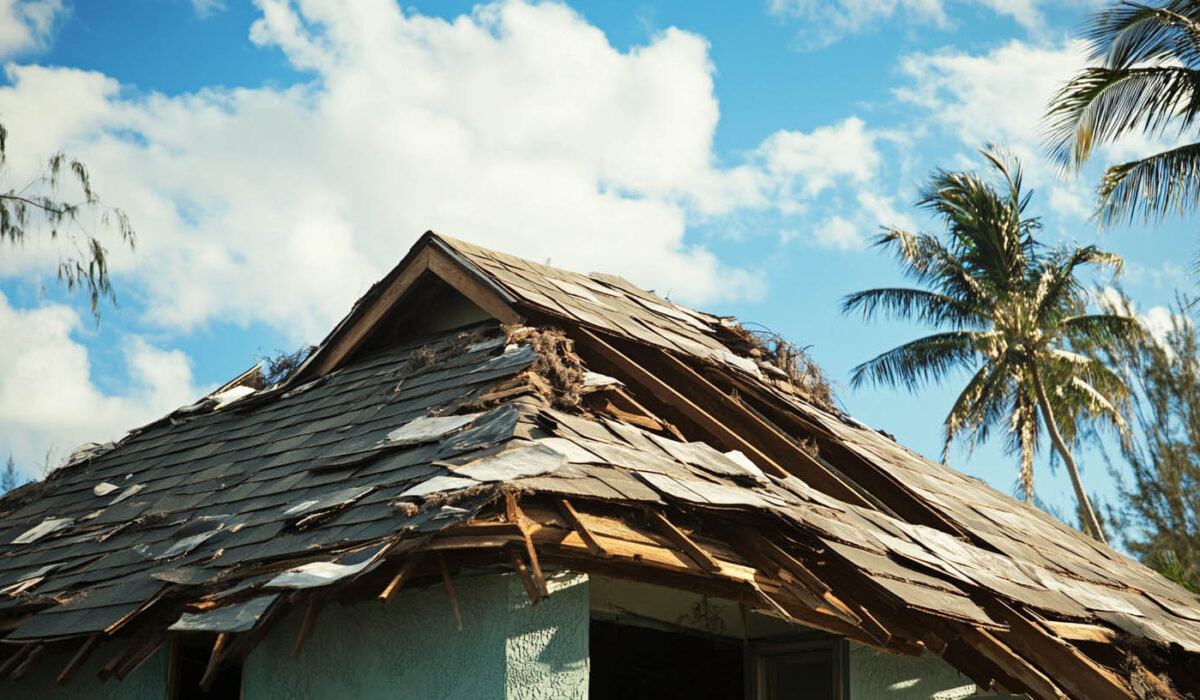Hurricane season brings unpredictable and often destructive weather, posing significant risks to your home and roof. Ensuring your roof is prepared to withstand the challenges of high winds, heavy rain, and flying debris is critical to protecting your property and loved ones. In this guide, we outline comprehensive strategies for safeguarding your roof during hurricane season.
The Role of Your Roof in Hurricane Protection
Your roof is your home’s first line of defense during a hurricane. Its large surface area makes it particularly vulnerable to extreme weather conditions, including:
- High Winds: Can lift and dislodge shingles, exposing the underlayment to moisture.
- Flying Debris: May puncture or damage roofing materials, leading to leaks.
- Torrential Rain: Can overwhelm drainage systems, causing water to pool and seep through the roof deck.
Taking proactive measures ensures your roof remains strong and resilient against these hazards.
Conducting a Pre-Season Roof Inspection
A thorough roof inspection is the foundation of hurricane preparedness.
Identify Existing Issues
Check for broken or loose shingles, damaged flashing, or sagging areas. These vulnerabilities can worsen during a storm.
Inspect the Roof Deck
Ensure the roof deck is securely attached and free of signs of rot or weakness. This layer provides structural support and prevents water intrusion.
Evaluate Gutters and Drainage
Clean and inspect gutters, downspouts, and drains to ensure proper water flow. Clogged systems can lead to pooling water and increased pressure on the roof.
Hiring a professional roofing contractor ensures no potential issues are overlooked.
Strengthening Your Roof for Hurricane Season
Homeowners in hurricane-prone areas should consider reinforcing their roofing systems with the following measures:
1. Install High-Performance Shingles
Choose impact-resistant shingles made from durable materials like asphalt. Secure them with asphalt cement for added strength.
2. Add Ice and Water Barriers
These underlayment layers prevent water from seeping into the roof deck, even if shingles are damaged.
3. Use Hurricane Straps and Braces
Reinforce roof-to-wall connections with straps and braces to reduce the risk of uplift during high winds.
4. Seal Vents and Openings
Inspect and seal vents, chimneys, and other openings to prevent wind-driven rain from entering your home.
Reducing External Risks
Mitigating risks outside your home can significantly reduce the likelihood of roof damage:
Trim Overhanging Trees
Prune branches that extend near the roofline to prevent them from breaking and causing damage during a storm.
Secure Outdoor Items
Anchor loose items such as patio furniture, grills, and decorations to prevent them from becoming projectiles.
Inspect Nearby Structures
Ensure sheds, fences, and other external structures are secure to avoid secondary damage.
Preparing for Emergency Situations
In addition to roof preparations, have a comprehensive hurricane safety plan for your household:
- Stock Emergency Supplies: Include water, non-perishable food, flashlights, batteries, and first-aid kits.
- Reinforce Windows and Doors: Use storm shutters or plywood to protect against wind and debris.
- Plan Evacuation Routes: Familiarize yourself with local evacuation procedures and safe shelters.
Omega Roofing, LLC: Trusted Roofing Professionals
Located in Jackson, TN, Omega Roofing, LLC, specializes in preparing homes for severe weather. As an Atlas Pro Certified Contractor, Omega Roofing combines exceptional craftsmanship with a commitment to customer service, ensuring that your roof is ready to face the challenges of hurricane season.
Emerging Technologies in Hurricane-Resistant Roofing
Innovations in roofing technology are enhancing protection against extreme weather:
Impact-Resistant Materials
Shingles designed to withstand high winds and debris impacts offer superior durability.
Smart Monitoring Systems
Sensors embedded in the roof can detect structural stress, leaks, and other issues in real-time, allowing for immediate intervention.
Seamless Metal Roofing
This roofing style offers excellent resistance to wind uplift and water penetration, making it ideal for hurricane-prone areas.
Frequently Asked Questions
1. How often should I inspect my roof during hurricane season?
Inspections should be performed at the beginning of the season and after any major storms to address vulnerabilities.
2. Are impact-resistant shingles worth the investment?
Yes, they provide enhanced protection against wind and debris, reducing the likelihood of significant damage.
3. What should I do if my roof is damaged during a hurricane?
Cover damaged areas with tarps to prevent further water intrusion and contact a professional roofer immediately.
4. Can I reinforce my roof without replacing it entirely?
Yes, adding hurricane straps, water barriers, and impact-resistant materials can improve your roof’s resilience without a full replacement.
5. How can I ensure my roof is covered by insurance?
Review your policy to confirm coverage for hurricane-related damages and document your roof’s condition with photos before the season begins.
Conclusion
Preparing your roof for hurricane season is a vital step in protecting your home and family from the destructive forces of nature. By conducting inspections, reinforcing your roofing system, and reducing external risks, you can minimize damage and ensure your home remains a safe haven during severe weather.
Read also: How Improperly Installed Pipe Boots Can Lead to Severe Roof Damage

